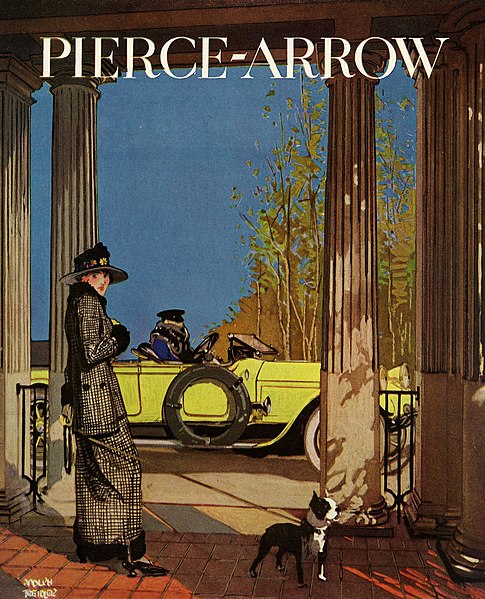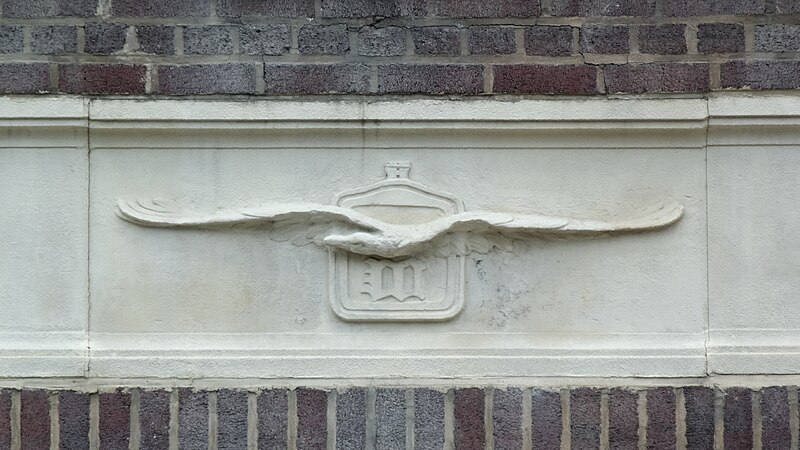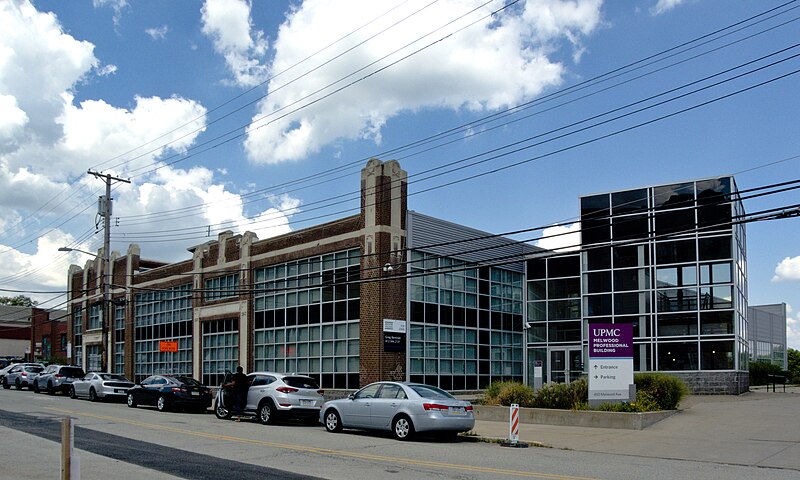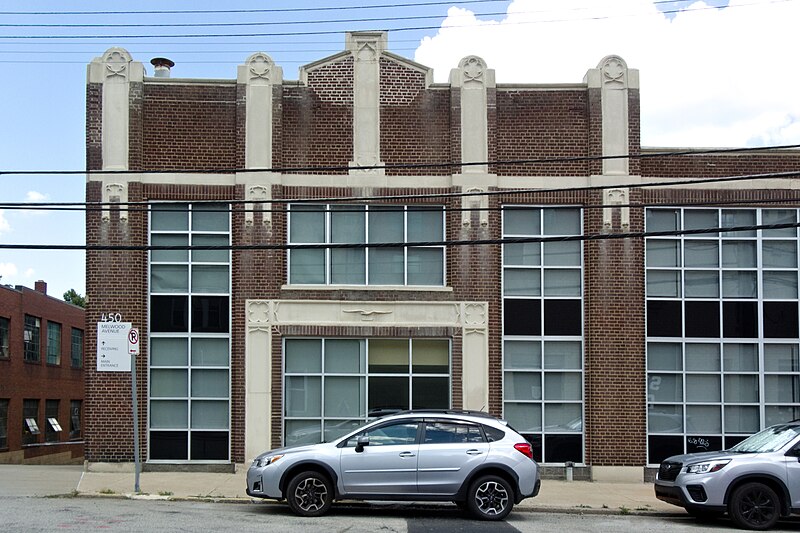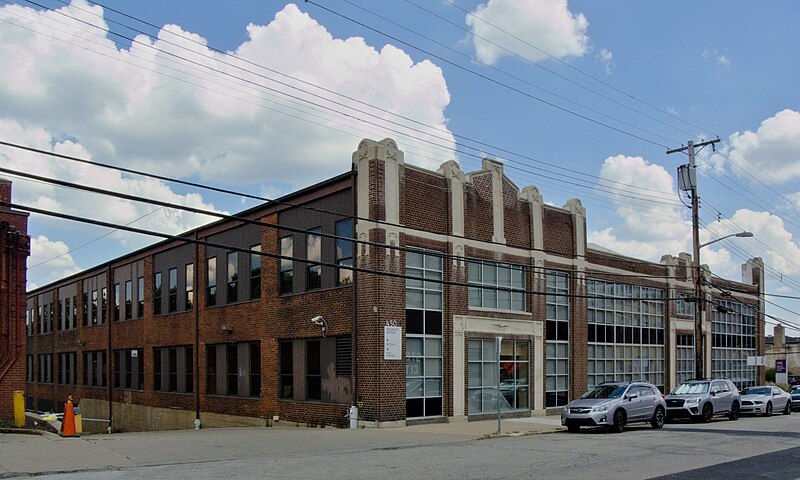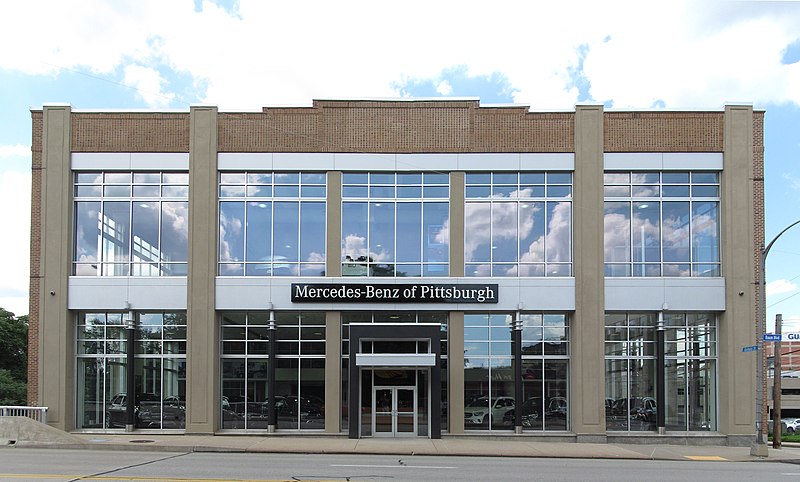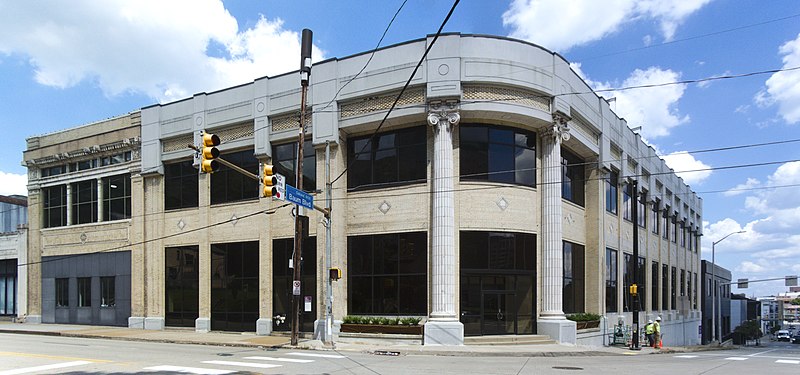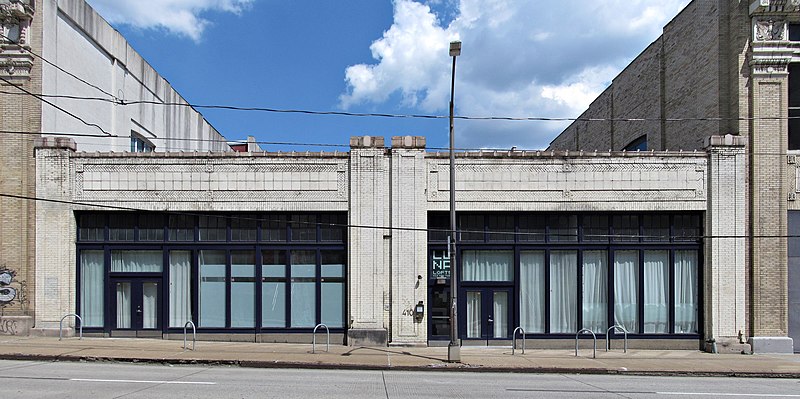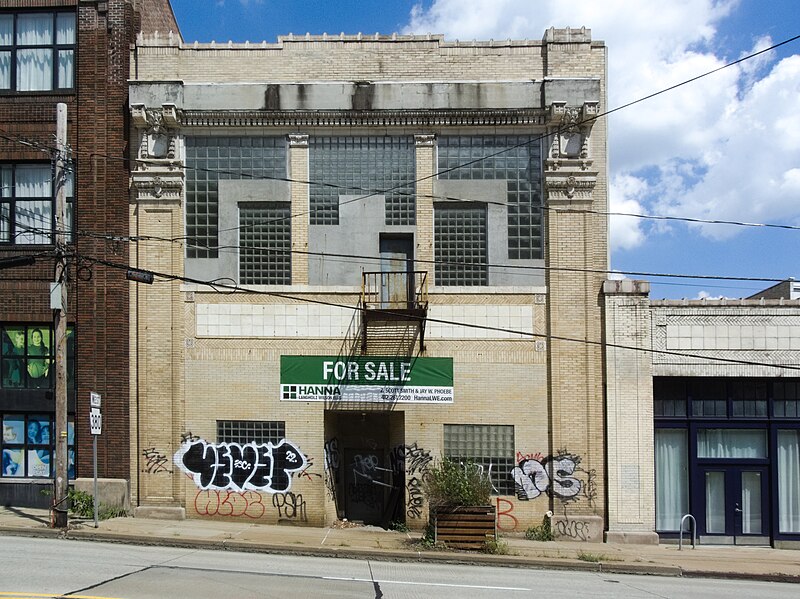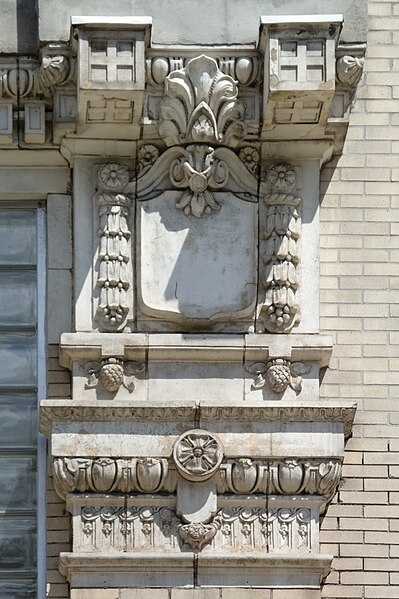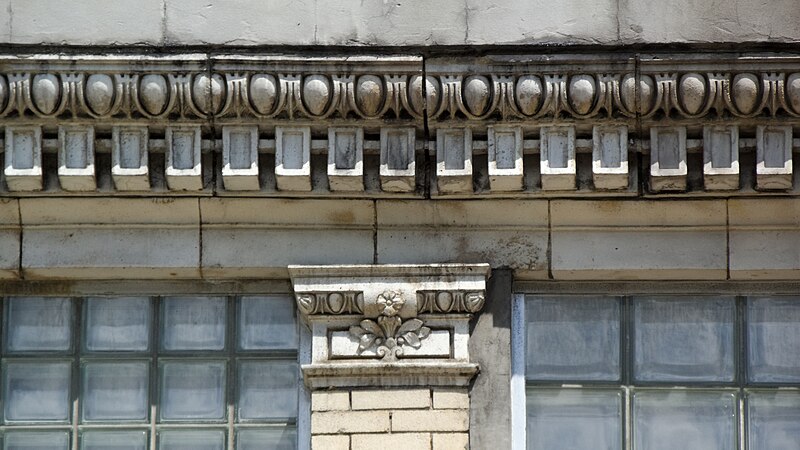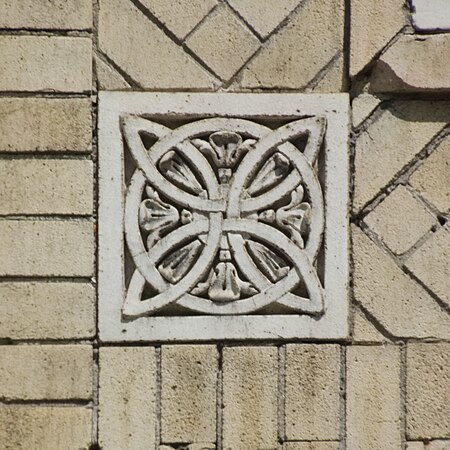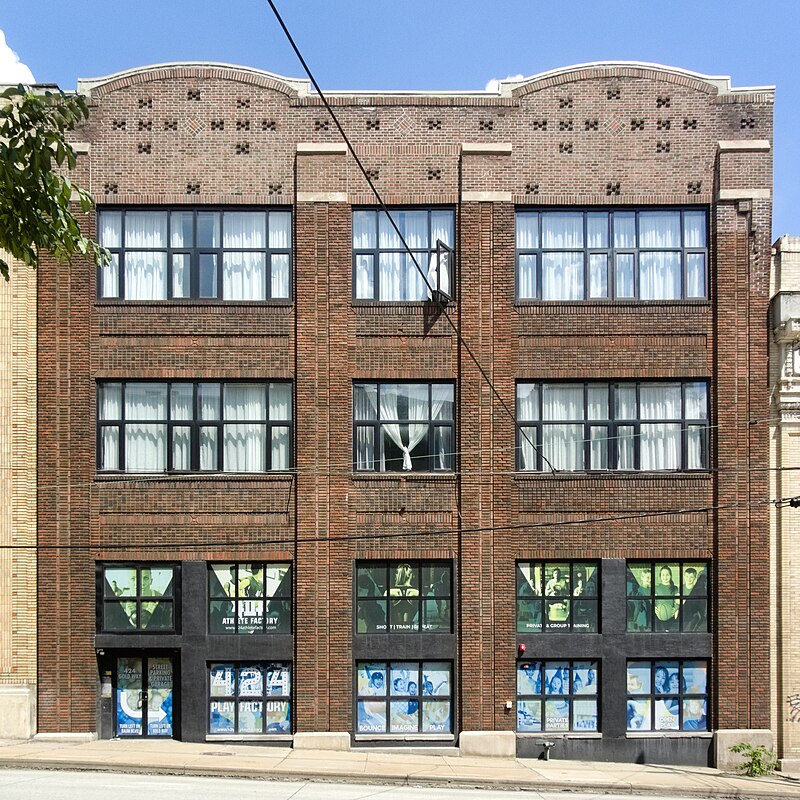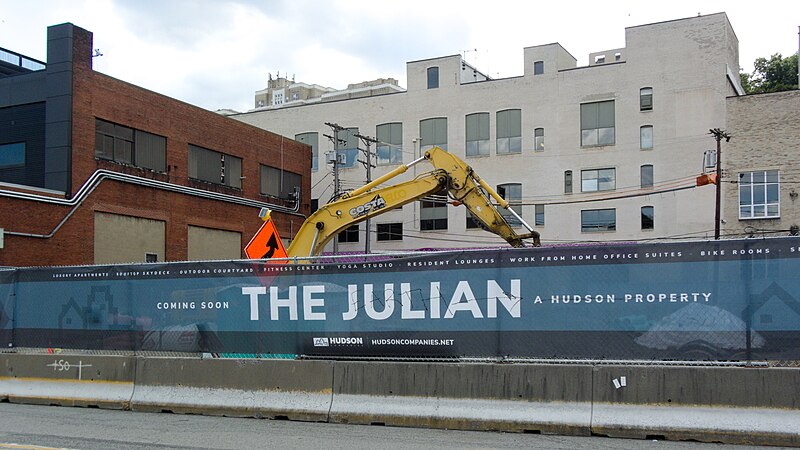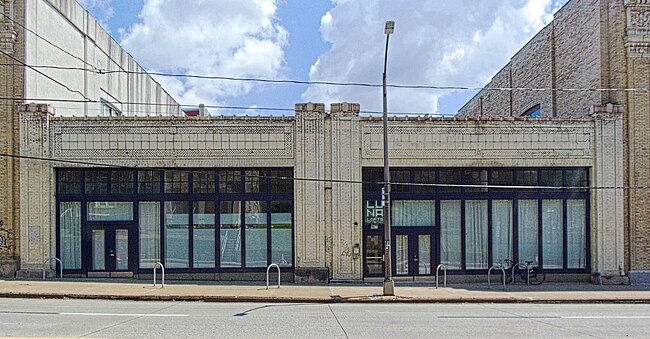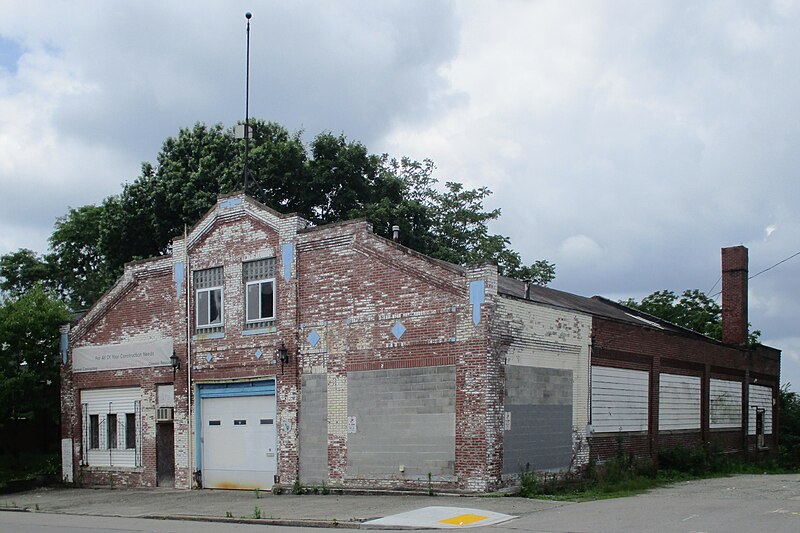
Now it belongs to a contractor, and the filling-in with concrete blocks and artificial siding is probably a fair sample of a Pittsburgh contractor’s taste. But the building is, on the whole, in an excellent state of preservation. It shows up on our 1923 map as the Horst & Mooney Garage, and we can probably guess what brand of cars it sold and serviced.
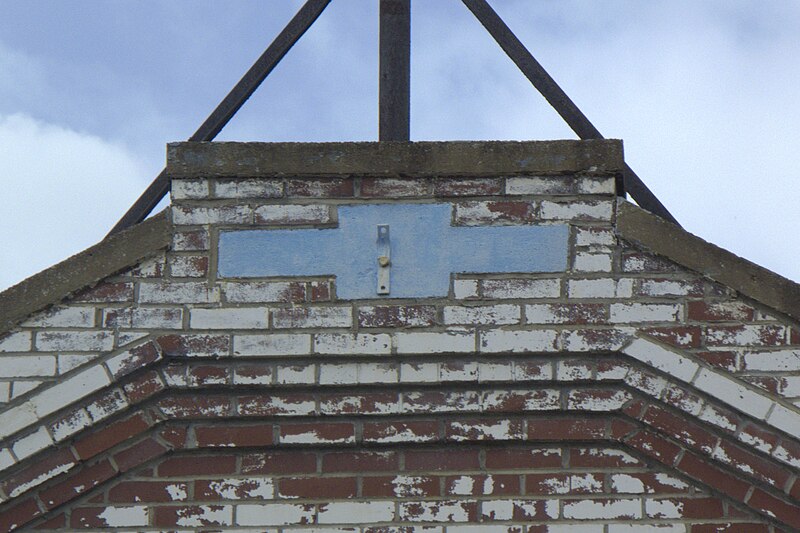
Update: Mr. John Hempel has pointed out that this was a Packard dealer in 1930. “In your fascinating Car Dealers page, Horst & Mooney may have been a Chev dealer more recently, but it was originally a Packard dealer. Pitt archives has a photo – just search Horst & Mooney.”
Many thanks to Mr. Hempel for pointing out the old photograph. Here is the picture he mentions, and the signs certainly leave no doubt about what cars this dealer was selling:

You can see a very-high-resolution scan at the Historic Pittsburgh site. Because the resolution is so high, we can see that the little decoration at the peak of the roof was there from the beginning:

It is possible that this is not meant to be a Chevrolet logo, but both the shape and the blue color seem hard to mistake.

So Father Pitt’s working hypothesis is that this was a Chevrolet dealer before it was a Packard dealer, but the well-to-do Brighton Heights clientele justified moving up in the world.
The 1930 photo gives us a good look at the original state of the building and confirms that, except for the filling-in of windows, it has not changed very much. As a bonus, we also get a good look at the California Methodist Episcopal Church and, right at the corner of the garage lot, a streetcar shelter.


![Service entrance]](https://upload.wikimedia.org/wikipedia/commons/thumb/9/9c/Sampson_Motor_Co.%2C_Oakland%2C_2022-08-19%2C_service_entrance_01.jpg/448px-Sampson_Motor_Co.%2C_Oakland%2C_2022-08-19%2C_service_entrance_01.jpg)


